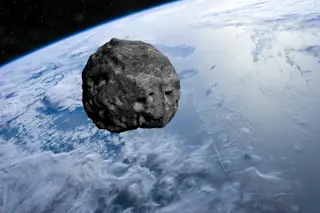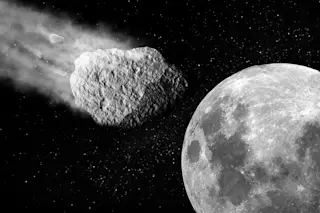June is a time for beach parties and barbecues. It is a time for wildflowers and warm breezes and slow summer evenings. It is a time when our sun-orbiting planet cuts across a trail of cosmic debris, scattered by a monster comet, that one fine day may visit a holocaust upon us.
So says astrophysicist Victor Clube of Oxford University. He’s been studying the Taurids--a meteor shower that strikes Earth each year in late June and again in November. The Taurids are not nearly as spectacular as, say, the Perseids of August; in June they’re not even visible, because they approach from the dayside of the planet. But Clube and his co-workers think the Taurids are underrated. The meteor stream, they say, includes rocks so large--as much as a mile across--that to see one up close would be to lose a city, a continent, or more.
The evidence comes in ...














